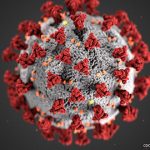The Centers for Medicare & Medicaid Services (CMS) overhauled the Current Procedural Terminology (CPT) evaluation and management (E/M) codes this year. The changes, intended to reduce the burden of documentation and make the coding process more intuitive, went into effect Jan. 1.

Ms. Chung
An ACR workshop, Mastering E/M Changes for 2021, held April 9 before the State-of-the-Art Clinical Symposium, helped attendees better understand how these E/M CPT changes affect their day-to-day coding practices. ACR Director of Practice Management Antanya Chung, CPC, CPC-I, CRHC, CCP, and coding specialist Melesia Tillman, CPC, CRHC, CHA, provided guidance on the new codes and how to use them.

Ms. Tillman
The revised codes are more specific and should better reflect what actually happens in a clinical setting, Ms. Chung said. The 2021 changes apply only to E/M codes 99201–99215. CPT code 99201, which applied to a new patient, level 1, was rarely used by rheumatologists and was deleted. However, CPT code 99211 (established patient, level 1) remains a reportable service with the same billing requirements.
Ms. Chung and Ms. Tillman shared several tips to ensure you use the updated codes correctly.
General Changes
- You can choose medical decision making or time when choosing how to code a visit. In your documentation, don’t try to document for both elements. Select the one you think is the best fit.
- A medically appropriate history and exam are required for all visits, but the time spent on them no longer affects code selection. However, continue to document the history and exam to assist all care team members in establishing medical necessity and justifying medical decision making, Ms. Chung advises.
Time
- Document time precisely and include total time. Although CPT code descriptors identify ranges for total time spent, providers may need to justify the amount of time spent on a given activity and should document their activities and time precisely and minimize the use of a time range in the electronic medical record. (See Tables 1 and 2.)
- Time can include both face-to-face and non-face-to-face elements, which is a change from the previous focus on only face-to-face elements, Ms. Tillman said. You no longer need to spend 50% of the visit on counseling or coordination of care to meet the time element. Time can include time spent by other qualified health professionals on the day of the encounter as well, but not the clinical staff. Also, keep in mind all time must be on the date of service and does not include any activities the day before or the day after.
Some tasks that can be grouped with time, according to Ms. Tillman, include:
- Reviewing test results;
- Obtaining or reviewing separately obtained history;
- Ordering tests, medications or procedures;
- Counseling and educating the patient and any family or caregivers; and
- Documenting clinical information in the electronic or other health record.
One example Ms. Tillman gave on how to document time is: “XX minutes were spent seeing the patient, reviewing chart and test results, coordinating care with caregiver, reviewing medication list, ordering medication and tests, and documenting clinical information in the medical records.”
- Don’t include time residents spend with patients. The requirements regarding teaching physicians have not changed, Ms. Tillman said. Only track time for the attending physician when focusing on a time-based E/M service.
- Take advantage of time-tracking tools. Tracking time may seem tedious, but the minutes can add up, Ms. Tillman said. Some electronic health records have tools that will track time whenever a patient’s health record is opened, so be sure to use them to your advantage.
Table 1: Time Redefined
| Prior to Jan. 1, 2021 | Effective Jan. 1, 2021 (& Beyond) |
| Time may only be used/selected if 50% of the encounter is spent on counseling and/or coordination of care. | Time can be used to select an E/M code whether or not counseling and/or coordination of care dominates the visit. |
| Time is based only on face-to-face activities on the date of service. | Time includes both face-to-face and non-face-to-face activities on the date of service. |
| Time criteria are based on a typical time for the level of service. | Time is based on defined intervals. |
Table 2: 2021 Time Intervals: CPT Codes 99202–99215
| New Patient | Established Patient | ||
| Code | Time | Code | Time |
| 99202 | 15–29 minutes | 99211 | not applicable |
| 99203 | 30–44 minutes | 99212 | 10–19 minutes |
| 99204 | 45–59 minutes | 99213 | 20–29 minutes |
| 99205 | 60–74 minutes | 99214 | 30–39 minutes |
| 99215 | 40–54 minutes | ||
Medical Decision Making
- Medical decision-making levels did not change. The original four levels of medical decision making—straightforward, low, moderate and high—remain the same, Ms. Chung said.
- Medical decision-making element titles did change.
- “Presenting problem” is now “number and complexity of problems addressed.” This includes the disease, condition, illness, injury, symptoms or complaint with or without an established diagnosis. To receive credit in this category, the management of the problem must be addressed and the diagnosis should include what was done to manage it, such as a prescription or counseling.
- “Diagnostic procedure(s) ordered” is now “amount and complexity of data to be reviewed and analyzed.” There is separate credit for multiple tests and the review of prior external notes from multiple sources, Ms. Chung said. However, providers receive no credit if the test was performed in house on the same date of service.
- “Management options selected” is now “risk of complications and/or morbidity or mortality of patient management.” One of several changes here is the addition of social determinants of health for level 4. This includes potential health hazards related to socioeconomic circumstances, such as low-level literacy, homelessness and drug addiction.
Telehealth
- Medicare payments for telehealth are here to stay, at least through the end of 2021. The COVID-19 pandemic has widely expanded the use of telehealth, going from a few thousand visits per week in the Medicare population pre-pandemic to 1 million telehealth visits per week during the pandemic, Ms. Chung said. The CMS has indicated it will extend payment parity for telehealth visits at least through the end of 2021. Office visits conducted through telemedicine will be paid at the same rate as in-person visits.
According to Ms. Chung, to code for a telehealth visit, practices should:
- Use the point of service (POS) that would be used if the visit were in person;
- Use the appropriate modifier based on payer requirements;
- Make sure the telehealth visit involves both audio and video for the office visit to meet Medicare requirements, and use CPT 99202–99215. For an audio-only visit, use the telephone E/M codes (CPT 99441–99443); and
- Use medical decision making or time to document a telehealth encounter, as with in-person visits; however, providers don’t need to document history and physical exam for telehealth visits.
Prolonged Service Codes
- Follow the changes for prolonged service codes. Providers may no longer report 99354 and 99355, which indicate prolonged service with direct patient contact, with outpatient E/M codes 99202–99205 and 99211–99215. Additionally, codes for prolonged service without direct patient contact (99358 and 99359) may no longer be reported with 99202–99205 and 99211–99215.
The new code for prolonged service with or without direct patient contact is 99417 (G2212), which can be used for each 15-minute increment beyond the total time of the primary procedure. Only use this code if you are following time for the coding, not medical decision making. List this code separately from 99205 and 99215.



